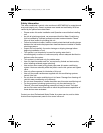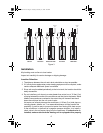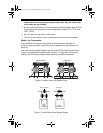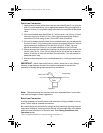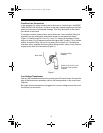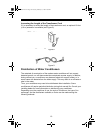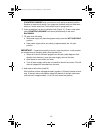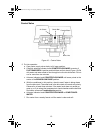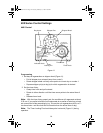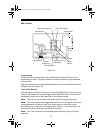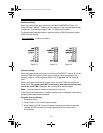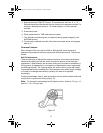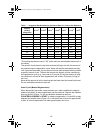
11
Sodium or Calcium Hypochlorite
Application
These materials are satisfactory for use with polystyrene resins, synthetic gel
zeolite, greensand and bentonites.
5.25% Sodium Hypochlorite
These solutions are available under trade names such as Clorox*. If stronger
solutions are used, such as those sold for commercial laundries, adjust the
dosage accordingly.
1. Dosage
a. Polystyrene resin; 1.2 fluid ounce per cubic foot.
b. Non-resinous exchangers; 0.8 fluid ounce per cubic foot.
2. Brine tank conditioners
a. Backwash the conditioner and add the required amount of hypochlorite
solution to the brine well of the brine tank. The brine tank should have water
in it to permit the solution to be carried into the conditioner.
b. Proceed with the normal regeneration.
Calcium Hypochlorite
Calcium hypochlorite, 70% available chlorine, is available in several forms
including tablets and granules. These solid materials may be used directly without
dissolving before use.
1. Dosage
a. Two grains (approximately 0.1 ounce) per cubic foot.
2. Brine tank conditioners
a. Backwash the conditioner and add the required amount of hypochlorite to
the brine well of the brine tank. The brine tank should have water in it to
permit the chlorine solution to be carried into the conditioner.
b. Proceed with the normal regeneration.
Placing Conditioner into Operation
Initial Start-Up
After the water conditioning system is installed, the conditioner should be
disinfected before it is used to treat potable water. Refer to the Disinfection of
Water Conditioners section in this manual. Complete the following steps to place
the conditioner into operation:
1. Remove control valve cover.
Note: The following steps will require turning the indicator knob (Figure 11)
to various positions. Insert a wide-blade screwdriver into arrow slot in
indicator knob and press in firmly. With knob held in, rotate
*Clorox is a trademark of the Clorox Company.
1018075 Rev I.fm Page 11 Tuesday, February 17, 2004 4:26 PM



